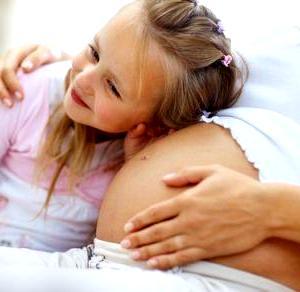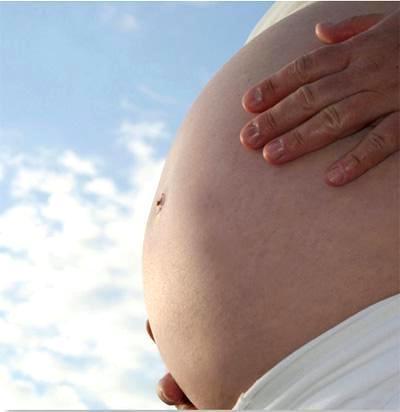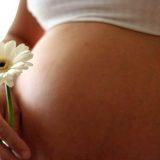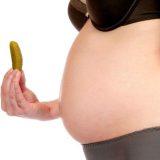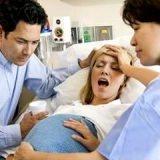Perineal and vaginal walls
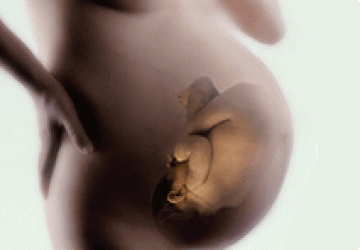
Perineal tears are one of the most frequent complications of childbirth.Perineal and vaginal walls are observed more often in nulliparous women.
Etiology and pathogenesis
Offensive perineal promotes a number of issues, primarily those anatomical and functional changes in her that violate stretch fabrics and make them less durable, easy tearing. P The gap crotch faster and easier to come with scarring after former ruptures during childbirth or plastic surgery, swelling in the tissues of the perineum. Unyielding, poor tensile crotch in nulliparous age (over 30 years) is increasingly being tear.Offensive gap contributes to the high crotch with powerful muscles.
Great importance in the occurrence of perineal has fruit size, especially the size of the head and shoulder area. For large fruit breaks occur more frequently; plays an important role and the bone density of the head, particularly in post-term pregnancies . Eruption through the sex gap head having even a mid-sized, in unbent condition, in hind sight occipital previa and low transverse distance of the sagittal suture increases the frequency of perineal tears. With the rapid delivery and breech presentation also increases the number of discontinuities, apparently due to the fact that the crotch with the rapid eruption of the head did not have time to stretch out and broken before use distensibility coefficient.
Narrow pubic arch, usually occurring at obscheravnomerno-narrowed pelvis and low inclination of the pelvis leads to the fact that the head when cutting is pushed toward the perineum, leads to greater tension and it increases the number of breaks.
Operative delivery, especially the use of forceps, accompanied, as a rule, an increase in the number of perineal tears. This is due to excessive stretching of perineal tissues. Upon eruption head front crotch stretches so that its height with a 2-fold higher than the original; it is the limit of extensibility crotch under the most favorable conditions and good condition fabrics. If the tension continues to increase, there comes a crotch gap.
Perineal rupture occurs at the end of the period of exile when cutting head or, more rarely, in deriving the hanger. Presenting part (head), moving down the birth canal, compressing the soft tissue and placed them easily compressible vein. As a result of this difficult outflow of venous blood and initially appears bluish color of the perineum, and in the future with continued venous stasis occurs propotevanie blood plasma into the surrounding blood vessels tissue, which is accompanied by swelling of the perineum, which is becoming a kind of shine, pointing to the threat of rupture.
If the pressure on the presenting part of the perineum tissue continues to grow, it is not only the veins are compressed, but the arteries, blood flow is disturbed. Bloodless fabric crotch pale, their resistance decreases and hyperinflation occurs gap.
Perineal tear are:
- spontaneous, occurring without any external influence during childbirth;
- violent, coming as a result of vaginal rodorazreshayuschih operations or technical errors during reception of delivery.
The gap may begin in the vagina, then spreads to the back wall of the vagina on the muscles of the perineum. In this first gap goes unnoticed and is found only at break of the skin of the perineum, which comes from the inside outwards. Such a mechanism of origin often leads to the fact that in the preserved skin of the perineum there is extensive damage to the walls of the vagina and the muscles of the perineum, which is recognized only when viewed after the birth of the fetus. Such a mechanism of origin of the gap is usually observed at operative delivery and rarely in spontaneous labor.
Perineal tears that occur when cutting head during spontaneous labor, starting with the rear spikes and rapidly increasing, spread posteriorly along the midline of the perineum and vaginal wall, going from outside to inside.
Clinic
Depending on the depth of tissue damage are three degree perineal tears:
- I degree perineal rupture: break the back of the spike, the vaginal wall in the lower third and the skin of the perineum;
- II degree perineal rupture: in addition to the walls of the vagina and perineal skin torn pelvic floor muscles; breaking the wall of the vagina generally does not follow the midline and in the direction towards the side wall, and if there bilateral receives forked shape.
Perineal tears I and II are called incomplete.
- Degree perineal rupture III – complete break: besides the above tissue is broken pulp (sphincter) anus and sometimes part of the anterior rectal wall.
Frequency and depth of perineal tears, especially III degree is usually dependent on the quality of obstetric care. Plays an important role, and self-study of the perineum for childbirth.
Any disruption of the perineal accompanied by bleeding in one degree or another. But in the sequence and the early postpartum period of bleeding from the fracture can not be seen, because at this time there is bleeding from the uterus. Therefore, in recognition of the perineal examination is most important parts of the external genitalia and vaginal walls in the lower third of which is made immediately after the birth of the placenta. It will be appreciated that there may be gaps isolated vaginal walls, especially when forceps; for the purpose of better recognition inspect the vagina through the vaginal mirrors. When complete perineal observed fecal incontinence and gases.
When you break in the clitoris and the external opening of the urethra as a result of damage to the vascular plexus, as well as third-degree perineal tears, there may be heavy bleeding, especially in varicose veins. In such circumstances, you can not wait until the last stand out, and it is necessary to immediately stop bleeding before discharge of the placenta or squeeze it out by the method of pre-Lazarevic credit.
Treatment
Treatment of perineal tears should be in their immediate stitching. Nezashitye breaks long to heal by secondary intention, Broken infected tissue, and an open wound is a gateway to infection, leading to the emergence of postnatal diseases.
Later nezashitye perineal tears adversely affect the health of women, accompanied by functional failure of the pelvic floor, and can lead to ptosis and falling of the internal reproductive organs. Yawning gender gap contributes to a variety of inflammatory diseases of the vagina and cervix, the appearance of erosions. Gaps III level, accompanied by incontinence of feces and gas, make a woman unable to work and intolerant of others. Therefore, all identified gaps are subject to suturing. And the sooner this is done after the delivery, the best results.
If sewn gap with significant bleeding, you should enter into the depths of the vaginal swab from a large sterile cotton or gauze, which will absorb the blood during suturing. The tampon is removed immediately from the vagina after sewing break.
When suturing of perineal rupture must be ensured in order to wound surfaces abut each other. This promotes healing.
In order to expose a good wound throughout, vagina disclose using lifts and vaginal mirrors. In the absence of an assistant can be two fingers apart (index and middle) of the left hand in a sterile rubber glove to push the vagina and expose the wound. As suturing wounds in the back of the vagina fingers gradually recovered and they are pushing the edges of the wound in the posterior commissure and the perineum. Suturing perineal and vaginal performed under anesthesia. Anesthesia not only saves a woman from pain, but also allows you to reveal the wound well all over, to accurately determine the size and direction of the gap. In the absence of these conditions, you can sew up the skin of the perineum and vaginal mucosa, and the damaged muscles of the perineum and pelvic floor will remain unreduced. The operation will be cosmetic in nature. Particularly seriously should treat suturing gaps III degree. If the stitching of this gap will not be connected to the ends of the damaged sphincter of the anus, the result of the operation is not satisfactory. Divergent ends of the sphincter, cutting, hiding in the depth of the wound and without careful and thorough examination of their knowledge of topographical relationships difficult to detect, especially in poor analgesia.
Suturing perineal I degree starts at the top, spending the first node catgut suture in the corner of the vaginal wound. Puncture and poke produce, departing from the edge of the gap by 0.5-1 cm. Needle pick up the tissues lying in the depths of the wound. Perineal skin sutured with silk. The edges of the skin wound can be interconnected with metal staples.
When perineal II degree is necessary to find the top corner of the gap. He often is left or right of columnae rugarum. Perineal these gaps often reaches almost to the anus and in depth reaches the pelvic floor muscles. As a result of differences in the depth of the damaged muscle rupture formed a cavity filled with blood. Bleeding vessels ligated using catgut ligatures, and then proceed to suturing the wound in the vagina. In the presence of the two lateral gaps sewn alternately. Catgut sutures or submersible in one continuous combined wound surface to a depth of a torn perineum and then nodal silk sutures connected edges of the wound of the perineum.
When you break the III degree violated the integrity of the sphincter of the anus (sphincter ani) and rectal wall. It is often accompanied by a considerable gap damage paravaginalnoy and pararectal fat.
First of all it is necessary to carefully connect the edges of the wound in the wall of the rectum and broken circular sphincter muscle, which ends as a result of retraction go to the depth of the wound.
Thin ligatures of silk, catgut less, connect the edges of the intestinal wound so that the needle does not pierce the mucous membrane, and would pass only through the submucosa. To this end, on the left side of the wound do poke, and on the right – puncture at the border of the mucosa.
Lubricate the skin wound with tincture of iodine, and the entire vulva, perineum, pubis and inguinal folds – sterilized liquid paraffin to prevent maceration of the skin and mucous membranes of the vagina.
Perineum is advisable to put sterile gauze bookmarks, changing them several times a day. External genitalia 2-3 times a day and after a bowel movement wash with a weak solution of potassium permanganate.
Enema after suturing deep breaks do not apply, and if the chair is not present, is given a laxative on the 2-3 th day; under a smooth postoperative period skin sutures are removed on the 5-6 day.
After surgery, the patient breaks III level in the first 5 days of receiving only sweet tea, coffee with a little milk, pure broth, mineral water and fruit juices; on the 6th day of added pureed plums, apples and carrots. On the 7th day, give a laxative, the 10th day of the general permit table. Sutures are removed on the crotch with a 5-6 day.
Rare complication of childbirth is the central perineal rupture. The latter arises when the head is moving not towards the genital slit, and presses on the right-entero-vaginal septum breaks through the back wall of the vagina and makes its way through the perineum, which is strongly bulging and torn down the middle. Through the opening born fruit.
Predispose to the appearance of the central perineal:
- high crotch;
- narrow, unyielding, lying anterior pudendal cleft;
- lack of inclination of the pelvis;
- rapid period of exile;
- Rear view of the occipital previa.
In order to prevent the occurrence of central perineal recommended cut during vrezyvaniya head. If the central gap has already occurred, the remaining bridge the gap dissect tissue edge, turning the central gap in the gap II or III level, which respectively sutured.
Subject to any suturing perineal rupture, except for minor abrasions on mucous membranes.
Together with the perineum often broken and large labia and tissue vestibule. Gaps in the clitoris and the external opening of the urethra is usually bleed much. All these discontinuities subject suturing, which is produced using thin catgut sutures. Suturing near the urethra at the last pre-administered metal cannula and under its control sutured gap.
Sometimes when you break the skin of the perineum perineum is preserved, and there is damage inside the walls of the vagina and perineal muscles, representing an extensive wound surface with a crush fabrics. The skin was dissected and perineal tear sutured conventional manner.
To ensure good healing wired perineal, careful care of parturients in the postpartum period. Some obstetricians consider it appropriate at least 2-3 times a day to make a careful washing of the external genital parts with a weak solution of potassium permanganate, or boric acid, and then they were dried with sterile material and sprinkle (to powder) dermatola, xeroform or white streptotsidom. Others do not recommend to wash the crotch area, and always keep it in a dry form, changing sterile gauze bookmarks.
IL Braude recommended after suturing perineal rupture exposure mercury-quartz lamp.
If the bowel before surgery was well cleaned, that the pregnant woman is rare, it is possible to do without the appointment of opium; but it is considered more appropriate in order to prevent early defecation appointed in the first 3-4 days of tincture of opium, 10 drops 3 times a day. Some obstetricians without using opium prescribed mineral oil into 1 teaspoon 3 times a day. The use of any of enemas after total perineal suturing undesirable.
In case of incomplete rupture on a 3-4 day give a laxative, skin sutures are removed on the 5-6 th day; puerperant in bed with smooth perineal wound remains to 7th day and a smooth flow postpartum period is issued on the 10th day.
Prevention
Prevention of perineal is correct management of labor, especially in the period of exile. 4 main conditions contribute to the prevention of perineal tears:
- Slow eruption of the head via the vulvar ring.
- Teething its smallest size.
- Slow and steady stretch fabrics vulvar ring.
- Careful monitoring of the eruption of a coat hanger and careful their excretion.
All of these four conditions is possible to provide efficient protection of the perineum during the so-called manual or manual with cephalic presentation.
Great importance in the prevention of perineal has psychoprophylactic prepare pregnant women for childbirth , which provides a reasonable, calm and disciplined behavior of mothers during the period of exile, especially during the eruption of the head.
In order to protect the perineum from break are encouraged to apply surgery.
VS Gruzdev considered the most appropriate to use an episiotomy, which is made 2-3 cm above the posterior commissure on one or both sides. Incision, the skin and the exciting part of the constrictor muscle bundles of the vagina, is made with scissors, and the length must be at least 2 cm.
Küstner suggested that instead of the side of the cut to make a midline incision of the perineum – perineotomy. DO Ott was a supporter perineotomy proposing to prevent perineal tears, especially subcutaneous ruptures of the pelvic floor, make perineotomy at every birth.Although a certain percentage of women in childbirth and have observed violations of the integrity of the pelvic floor muscles with intact skin of the perineum, the proposal DO Ott systematically produce perineotomy found no supporters.
Currently perineotomy produced in childbirth, in cases where, despite the good conductivity protection, there is a threat perineal.Incision is made, when the perineum is stretched and strained enough, that is when it thinned, pale and became brilliant.
Some obstetricians spoke critically about the episiotomy.
When perineotomy if the incision is made 3 cm long, vulvar ring expands to 6 cm. Linear incised wound is sutured easily and well healed.
III degree perineal tears occur during childbirth without medical care or inept and very rapid removal of the head of the tongs or during the removal of the fetus pelvic end.
A beneficial effect on reducing the number of perineal use of pain relief in labor.
Basis in the prevention of perineal tears should be correct reception of delivery and careful delivery is for obstetric operations.


